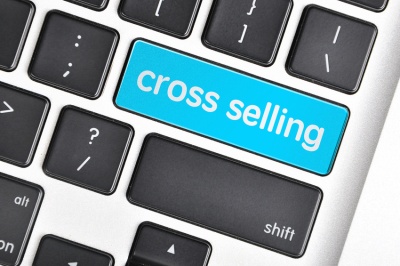Cross selling means selling an additional item to an existing customer, whether at the point of sale or in a follow up. The product doesn’t even need to be related to the initial purchase to work.
Read on to find out why cross selling is such an effective strategy.
The Psychology of Selling and Why Cross Selling Works
Cross-selling simply means that you are selling more than one product to an existing customer. This might mean that you upselling by adding an additional product to an existing deal or by following up a sale with a new offer. Likewise though, it might also mean using point of sale techniques or more. Whatever the case, this approach recognizes the value inherent in closing any sale and how this can be used to its fullest potential.
In order to fully understand why cross selling is such a powerful tool, it can be useful to consider the psychology of buying. Why do people buy? Why don’t they buy? And why is adding an additional item to a sale, or selling to a pre-existing customer, often much easier than selling to someone for the first time?
Here are some examples and insights…
Time Pressure: As a race humans like to mull things over and we don’t like making snap judgement.
If you show someone something they might want, then
- they are going to likely decide to ‘sleep on it’ and see if
- they want it in the morning.
The problem is though, that people often don’t want something in the morning because they’re thinking about something new. If you are trying to sell something from your site then, you want people to buy now, now, now so that they don’t change their mind. Adding a time pressure such as a limited-time-only deal is a great way to get people to act right away.
Investment
When someone has invested time and energy in something, then they will tend to want to actually go through with it. If you have ever gone into a Turkish market and been sold something they you’ll have felt this – after chatting for 20 minutes and drinking tea then you’re going to feel like you’ve wasted your time if you come away empty handed. This is also why lots of websites use those long narrow splash pages to sell e-books – because the further you scroll down to the read the more and more you are committing to buying and otherwise it’s a waste of time.
This is another reason that cross selling makes sense. Once someone has gone through the rigmarole of signing up to your site and adding their address, they might then want to maximize that investment by spending more money with you. It sounds strange, but it is precisely what might encourage someone to buy again from the brand they just committed to by buying from that first time.
Reciprocation: And that’s the other reason that those market owners give you free tea and most likely free jewellery – because when we get given something we are overcome by a compelling urge to give something back which means that we end up often over compensating and giving something that is of much higher value. If you give someone a free e-book then on your site, then you will be likely to encourage people to ‘give back’ by digging into their pockets. Give ‘till it hurts!
If you do a great deal with someone once and maybe even exceed their expectations, they may even feel morally obligated to buy from you again – which is very useful when it comes to cross sales off course!
Elitism: We want things that no one else has, and we want things that are in short supply – it makes us feel special. If you want to suddenly increase the value of your stock then, simply claim that there isn’t much of it less. This has a double impact because it also increases the time pressure yet again.
Barrier to Buy
Something that prevents people from buying can be called a ‘barrier to buying’. This often comes down to plain effort – someone might be interested in buying your item, but they are less likely to if they have to spend a long time signing up. Amazon knows this well which is why they have their insidious one-click to buy button on every page which has likely cost most of us hundreds if not thousands. Employ something similar and make sure it is easy for people to buy. This is also why POS works (Point of Sale) – because it encourages people to buy when they already have their wallets out and their finger hovering over the checkout button making it really very easy for them to add other tempting offers.
